Grafting is often the only option to ensure positive results for those of us who enjoy the challenge of growing plants such as Eremophila in soil and climate outside the normal habitat. Propagation is a popular approach by the public and the nursery trade for creating new garden plants.
This article explains a feature which can arise from grafting, called a graft-chimera.
One of the first graft-chimeras
One of the first reported graft-chimera occurred in my friend’s garden at Drysdale, Victoria with a root stock from Myoporum insulare and the graft scion material of Eremophila hygrophana. The new organism began as a grey shrub with small lilac corolla and then part of the shrub changed from grey to green with a white Myoporum corolla. As sometimes occurs, this chimera is quite unstable, however it remains alive and now has mostly green foliage (see Image 1). There is some thought that this mutation could be caused simply by a bite from an insect or even sun exposure on the stem causing damage to the cells. These assertions are not supported by scientific evidence and reasons why this occurs remain unknown, however it is common knowledge that pruning can initiate these changes.
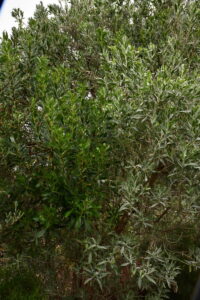
An interesting growth, known as ‘graft-chimera’, can form within callus tissue at the graft union. Callus is a soft tissue that forms over wounds to help plants heal and it can become organised to produce stems and leaves. In graft-chimeras, this callus contains a mixture of cells from both the root stock and the scion. The new shoots may contain different proportions of each cell type and hence look quite different from both the rootstock and the scion, exhibiting intermediate leaf and flower combinations. If the chimera is stable, material from the shoots can be grafted onto a new rootstock to produce a novel plant. Chimeras occur in other plant families, either naturally or contrived to produce improved ornamental features such as variegated foliage. Instances of chimeras also occur in the animal kingdom, including humans.
Another graft-chimera
Subsequently, a graft-chimera now exists at Curlewis, Victoria. The Eremophila scion species is unknown, with details lost over time, but my impression is that it is either E. hygrophana or E. mackinlayi. The first new organism, growing from the graft union, looked like Myoporum but had grey foliage. The original grafted Eremophila scion grew to a massive size and was pruned hard which then produced an unusual large-leafed growth. Attempts to propagate from this growth were unsuccessful. Although the original plant died, cutting propagation from the second growth Eremophila scion growth was successful and eventually planted. The plant, which has beautiful purple corolla, looks like an Eremophila but is the result from propagating a graft-chimera (see. Image 2). It is 4.5 m high by 6 m wide (see Image 3) in contrast to the E. hygrophana and E. mackinlayi which only grow to about 1 m high.
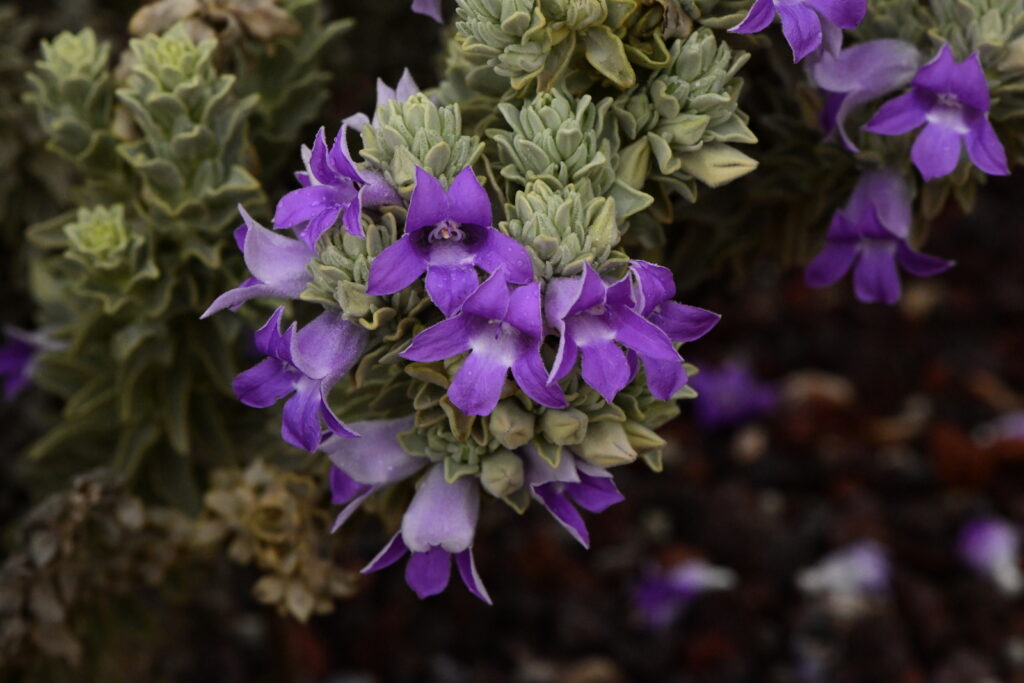
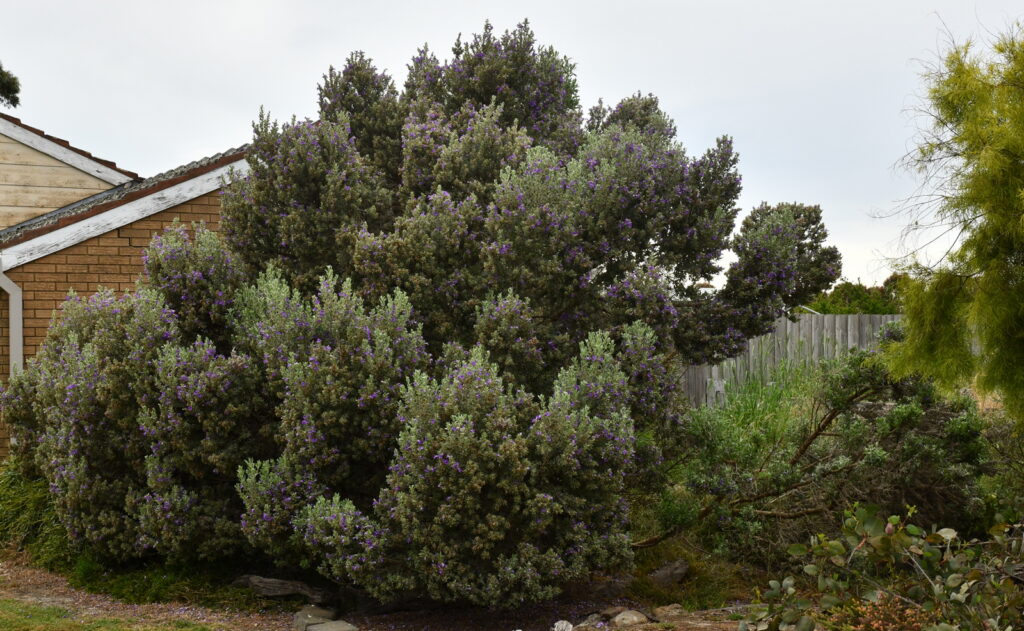
The sheer size of this plant suggests that it has some genetic material of Myoporum and makes it unstable for propagation. Cuttings taken from this plant, particularly when pruned, can produce green shoots which appear to be Myoporum. The plant is still growing at Curlewis and keys out in part to E. hygrophana, however I have observed cuttings from this plant which key out more like E. mackinlayi. The instability is further indicated by the occurrence of 3 flowers in a leaf axis while at other times there is only 1 showing.
A cutting from the graft-chimera at Curlewis
I have observed a plant, labelled an Eremophila, which is a known cutting propagated from the Curlewis plant. Because of its size and close proximity to the house, it was pruned to a more manageable size. This process resulted in green and grey shoots which appear Myoporum in size and shape (Images 4 & 5). The new growth is significantly more vigorous than the original plant and may indicate that the genetic material from the Myoporum may have become the more dominant.
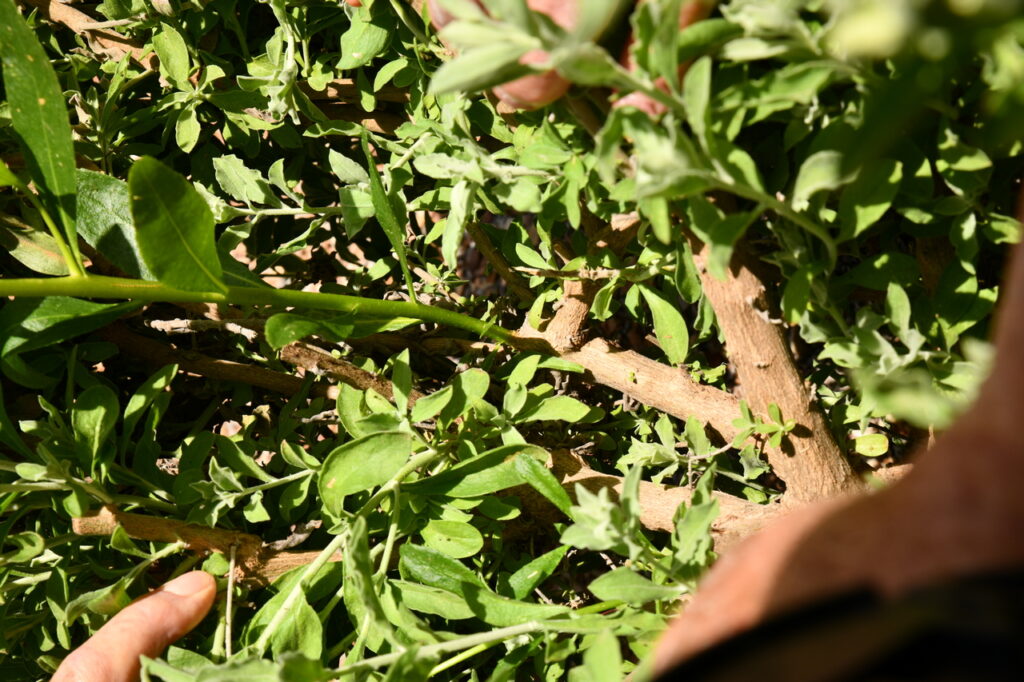
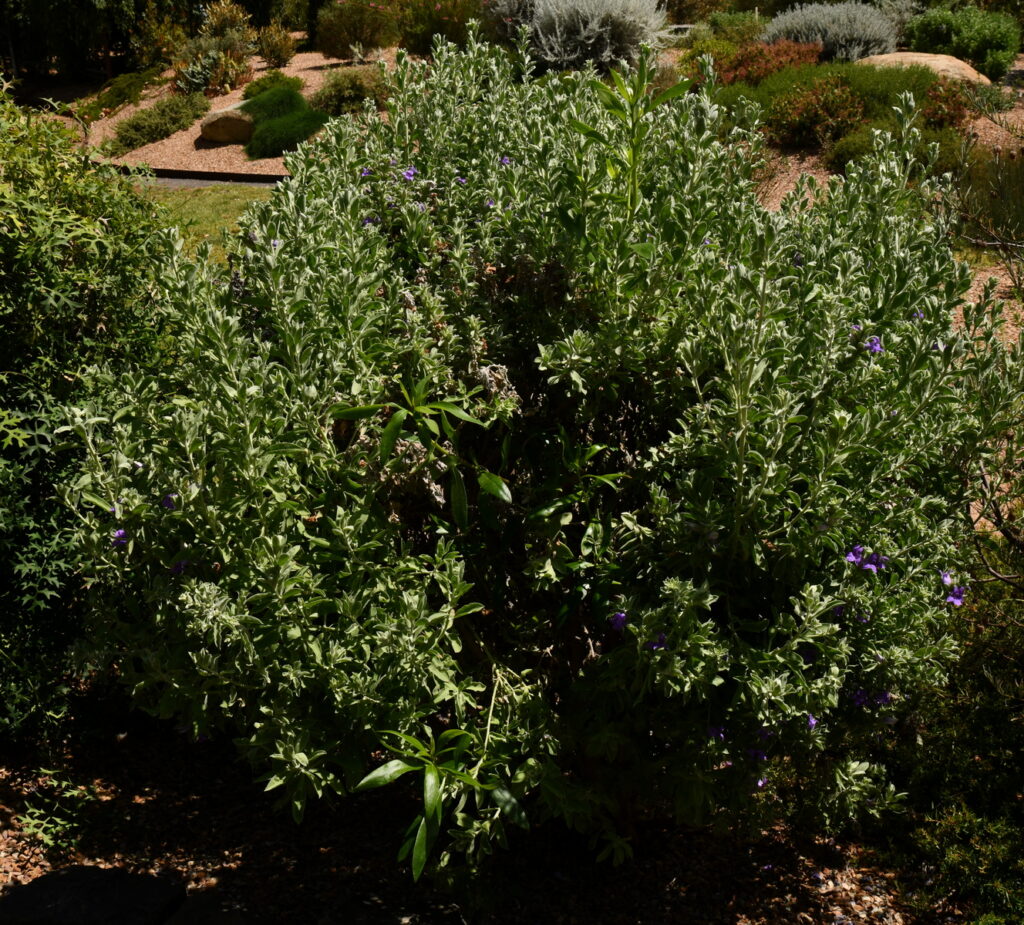
Four types of foliage
Just to add to the curiosity and observed instability, I am aware of another graft-chimera on a plant obtained as an Eremophila and from the Curlewis plant. It is now displaying 4 types of foliage, all occurring after pruning. (See Image 6).
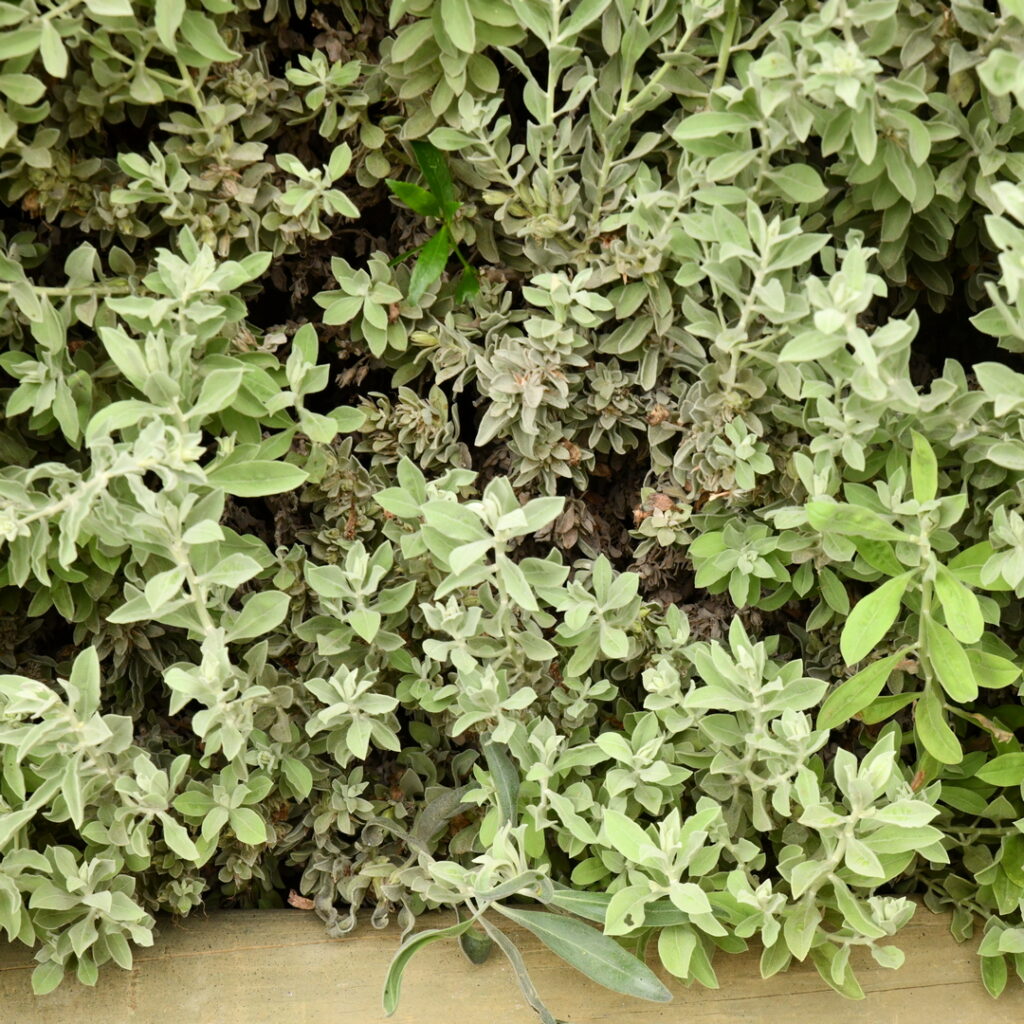
Unlike the selective removal of rootstock growth, removal of a graft-chimera growth is a continual and repetitive process. Removal of a graft-chimera requires shoot removal from the graft union which in turn could trigger the ‘aggressive-growth’ genetic material. Without due diligence, it can outgrow the original plant.
Take care selling and sharing plant material
In my opinion, there are plants labelled and sold by some nurseries as either E. hygrophana or E. mackinlayi which have originated from the same plant at Curlewis that grows to an exceptionally large shrub. These so called Eremophila differ in the type of hairs on the sepals; notably sepals of E. hygrophana have glandular hairs and E. mackinlayi without glandular hairs. One requirement for cultivar registration is the ability for the plant to be reproduced in the same, stable form which this one does not. A graft-chimera is not a hybrid as that happens through cross pollination of 2 species. This graft-chimera, due to the inherent instability, is only a curiosity and should not be called an Eremophila.
Sharing plant material is a feature of belonging to a group of like-minded gardeners. I suggest that care should be taken when selling, trading or sharing plant material from a graft-chimera or plants with the name E. hygrophana or E. mackinlayi. Cuttings or scions from a graft-chimera could be used unwittingly. The plant described on the label might not be what you wanted and you may be disappointed, especially after pruning, because of the graft-chimera instability.
It is worth pointing out that graft-chimera can also occur on E. revoluta, E. prostrata and E. warnesii.
For more on chimeras:
Chimera (genetics) – Wikipedia
en.wikipedia.org › wiki › Chimera_(genetics)
Origin, Development and Propagation of Chimeras:
aggie-horticulture.tamu.edu › Chimeras › chimeralec
